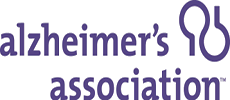THE PROJECT
Hippocampal atrophy can be measured in vivo through manual segmentation on Magnetic Resonance images (MRI) and it is an acknowledged supportive marker for the diagnosis of Alzheimer's disease (AD). Unfortunately to date agreement is lacking on the anatomical landmarks and measurement procedure. Without comparability of methods, this marker can not be used in clinical diagnostic routine, nor will it be possible to directly compare the effect of different drugs in slowing down neurodegenerative processes.
The aim of this project is to develop a harmonized protocol for the measurement of hippocampal volume through manual segmentation on MRI. The availability of a standard and shared protocol for hippocampal volumetry will foster the validation of the new diagnostic criteria and their use in clinical settings, allow to compare the effect of disease modifying drugs, and represent the gold standard for automated segmentation algorithms. In the long run, the availability of a standard protocol will allow pooling data from compatible worldwide datasets thus leading to increased knowledge on the disease itself.
The project runs in phases, started with the selection of the 12 most used hippocampal segmentation protocols from the Alzheimer's literature and the extraction of differences among these protocols. Quantitative information is gathered about these differences, and fed to a panel of world experts, to help them to take evidence-based decisions and achieve a consensus on a harmonized protocol through the Delphi method.
When defined in all details, the harmonized protocol will be validated versus neuropathological data and versus currently used protocols (download the Validation Phase Flowchart). The final phase consists in the creation of a standard web-based qualification system, which will allow tracers worldwide to learn and qualify for the hippocampal segmentation based on the harmonized protocol. A online user-friendly educational "Segmentation Guideline" and hippocampal probabilistic maps will be made public and will represent the international reference.
You can download the grant application, describing the whole project in details.
On this web-site, updates about the project can be found. Periodical meetings are carried out for dissemination and coordination. All the main steps and results of the project will be documented and disseminated through publications on impacted journals and presentations in the main congresses about neuroscience and Alzheimer's disease.
